Volume 7, Issue 1
Displaying 1-7 of 7 articles from this issue
- |<
- <
- 1
- >
- >|
Report
-
2004Volume 7Issue 1 Pages 1-6
Published: 2004
Released on J-STAGE: April 22, 2004
Download PDF (449K) -
2004Volume 7Issue 1 Pages 7-14
Published: 2004
Released on J-STAGE: April 22, 2004
Download PDF (190K) -
2004Volume 7Issue 1 Pages 15-22
Published: 2004
Released on J-STAGE: April 22, 2004
Download PDF (306K) -
2004Volume 7Issue 1 Pages 23-28
Published: 2004
Released on J-STAGE: April 22, 2004
Download PDF (158K) -
2004Volume 7Issue 1 Pages 29-33
Published: 2004
Released on J-STAGE: April 22, 2004
Download PDF (159K) -
2004Volume 7Issue 1 Pages 35-39
Published: 2004
Released on J-STAGE: April 22, 2004
Download PDF (153K) -
2004Volume 7Issue 1 Pages 41-47
Published: 2004
Released on J-STAGE: April 22, 2004
Download PDF (184K)
- |<
- <
- 1
- >
- >|
